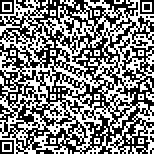下载中心
优秀审稿专家
优秀论文
相关链接
摘要

叶面积密度LAD(Leaf Area Density)是表征冠层内部叶面积垂直分布的重要参数,其分布廓线的准确反演对研究植被碳氮循环、初级生产力和生物量估算等具有重要意义。本文在电子科技大学校内建立实验样区,利用地基激光雷达Leica ScanStation C10和数码相机获取玉兰林高分辨率3维激光点云数据和真彩色影像。利用监督分类将真彩色影像中枝干等非光合组织与叶片分离,再将像素分类信息映射给点云数据,从而提取叶片点云。通过点云数据体元化,并引入2维凸包算法确定垂直方向分层树冠边界,获取激光接触冠层的频率;随机选择不同高度的多个叶片,利用特征值法进行叶片平面拟合,估算出叶倾角,并结合天顶角估算叶倾角校正因子;最后基于体元的冠层分析VCP(Voxel-based Canopy Profiling)方法实现树林冠层LAD反演。结果表明体元化的叶片点云数据能准确确定树林冠层边界和统计接触频率实现LAD反演;反演的LAD变化走势与区域林木冠层叶片垂直分布相吻合,在冠层中下部随着高度的增加叶面积密度也随之增加,在4 m高度处达到最大值1 m2/m3,之后随着高度的增加叶面积密度逐渐降低。根据LAD计算得到的累积叶面积指数LAI为3.20 m2/m2,与LAI-2200实测的叶面积指数相比,相对误差为1.26%。
As a canopy vertical structure parameter, the Leaf Area Density (LAD) of horizontal layers is generally applied to quantify the leaf area within a given volume. It is important in characterizing the vertical distribution of leaf chemical components and canopy biomass. Light Detection And Ranging (LiDAR) has been widely applied to obtain the three dimensional structural properties of vegetation in the past ten years. Terrestrial LiDAR data can be utilized to estimate LAD. The objective of this studyisto develop a new method for woody canopy LAD estimation through the use of terrestrial LiDAR data.
High-resolution point clouds and true-color images of Magnolia woody were acquired with Leica Scan Station C10 and a digital camera device, respectively.The study sites arelocated in the University of Electronic Science and Technology of China. Leaves were labeled through supervised classification of true-color images based on the registration of point clouds and true-color images.The laser-scanning points over leaves were accurately extracted with the classification acquired from the corresponding image pixels. Through the voxelization of point clouds, the two dimensional convex hull algorithm was introduced to determine the boundaries of each vertical layer of tree crowns and the contact frequency of laser canopy. With the Eigenvalue method, leaves at different tree heights were randomly selected to fit leaf planes and estimate leaf angles.Together with the zenith angle, the adjustment factor of leaf angles was identified. Finally, the vertical profiles of LAD were retrieved with the Voxel-based Canopy Profiling (VCP) method.
The voxelization of point cloud data can be used to accurately determine forest canopy boundaries and the statistical contact frequency of LAD inversion. The LAD profile is in agreement with the vertical distribution of canopy leaves. The LAD values increased with the height of trees in the middle and lower canopies, and the maximum LAD was 1 m2/m3 at a height of 4 m.The LAD valuesdecreased in the upper canopy as the height increased. The Leaf Area Index(LAI) calculated from LAD was 3.20 m2/m2. Comparison with the field measurements acquired by LAI-2200 suggested that the relative error was 1.26%.
By combining true-color image classification and canopy point cloud registration, point clouds over leaves can be accurately extracted from original LiDAR data. The LAD of woody canopy can be estimated from point clouds over leaves through the VCP method;in particular, the blade of the point cloud voxel can accurately determine the forest canopy boundaries and statistical contact frequency and can also be used in LAD estimation. However, the accuracy of LAD estimation cannot be evaluated directly because LAI does not reflect the vertical layer of LAD. LAD values need to be investigated in future studies.

